Refund Guaranteed
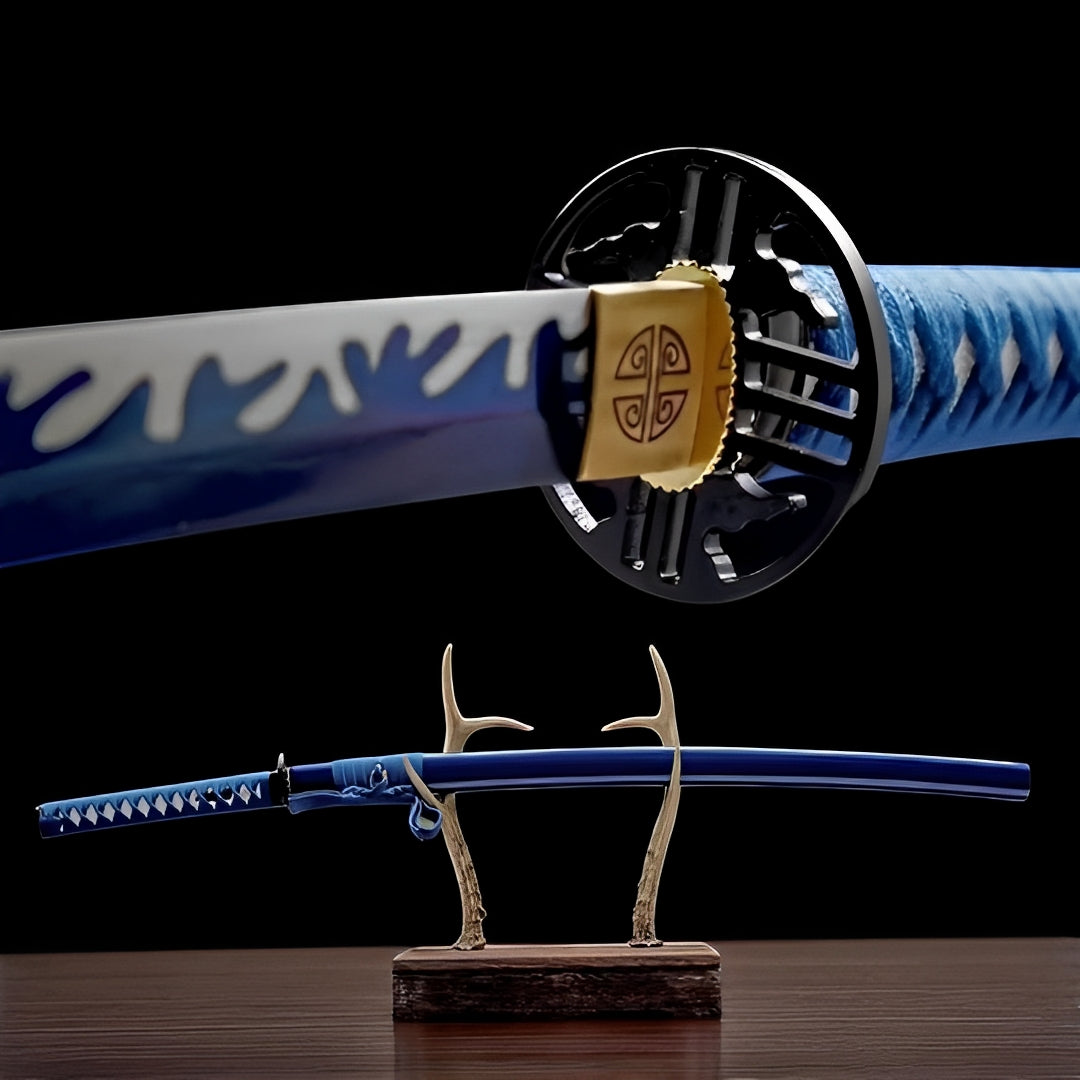
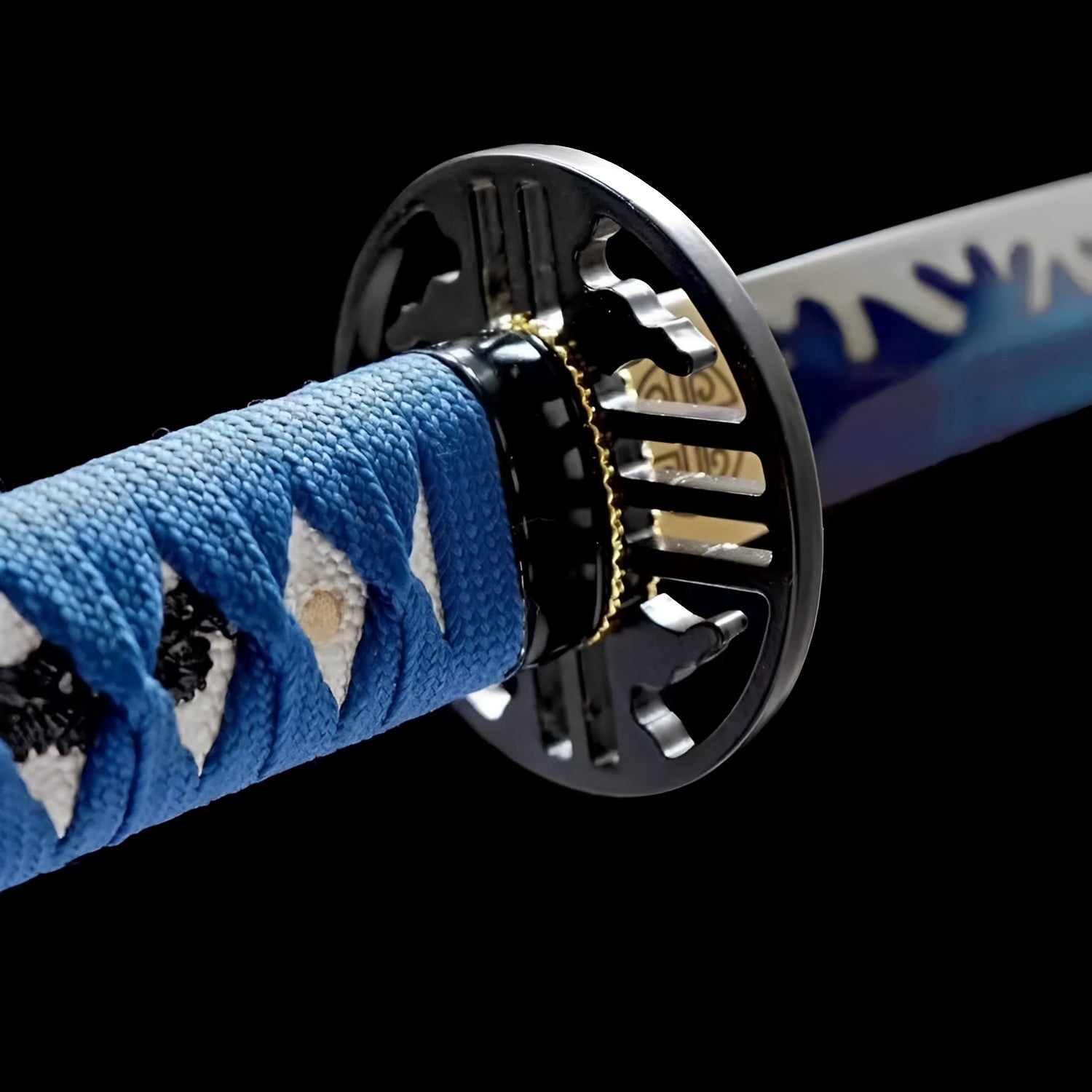
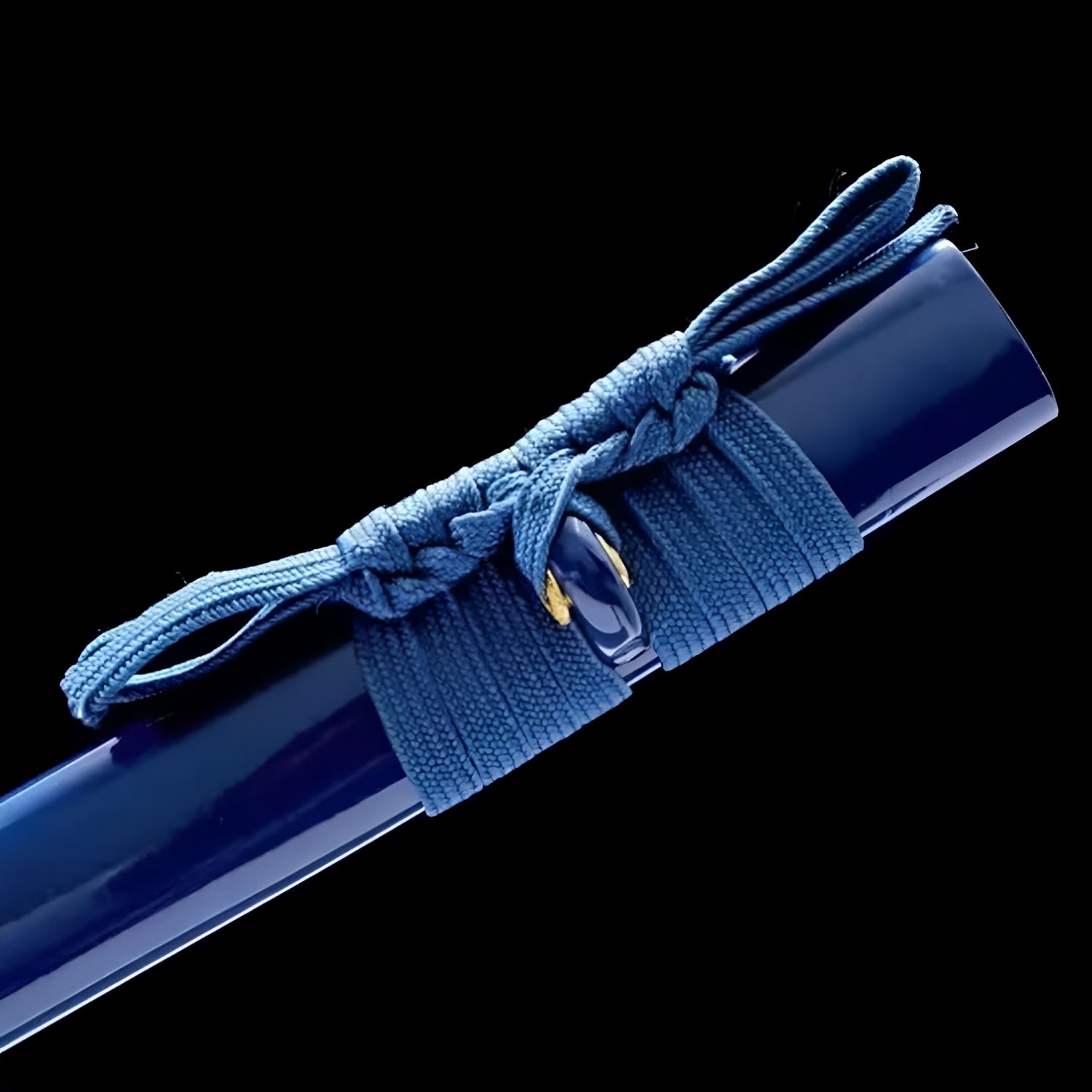
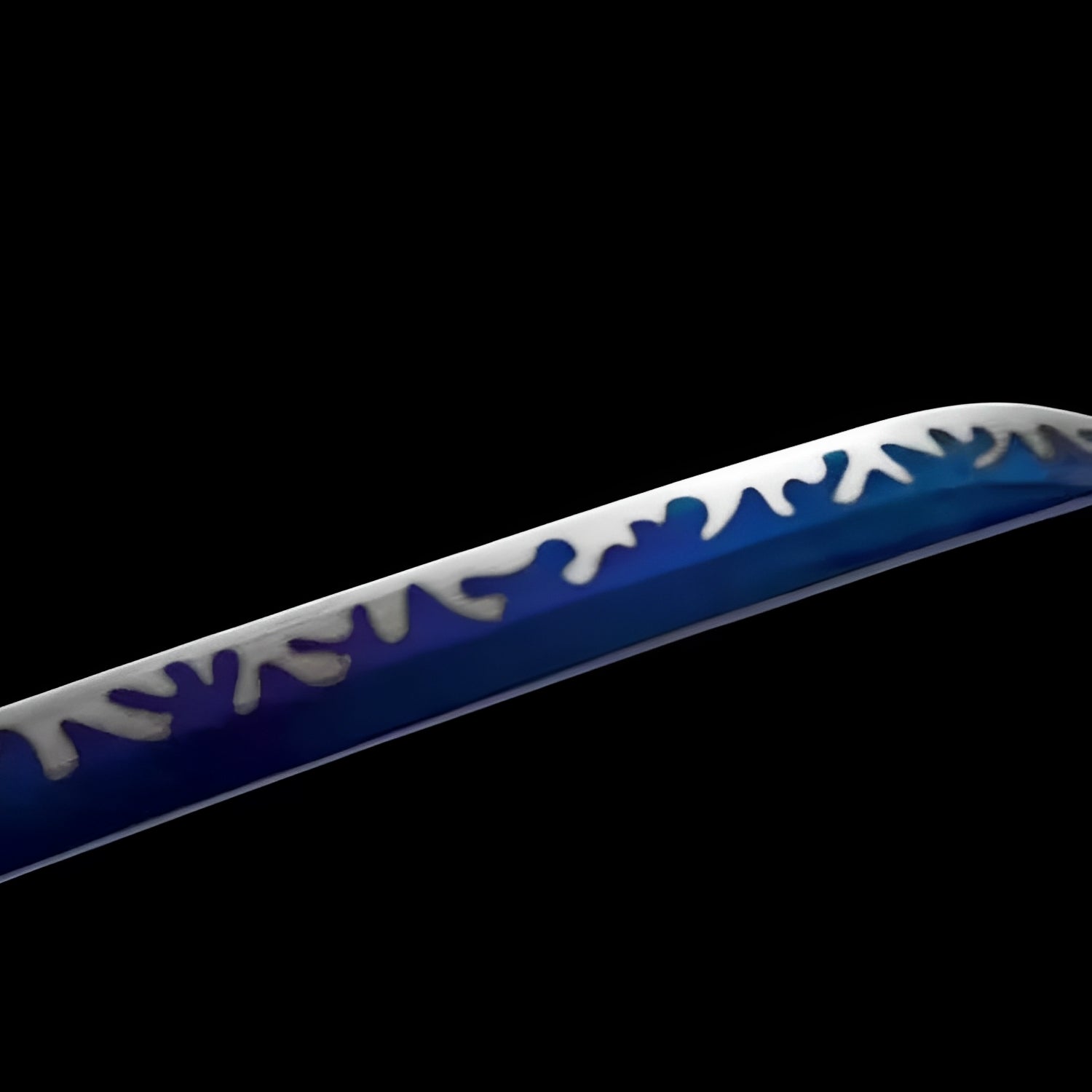
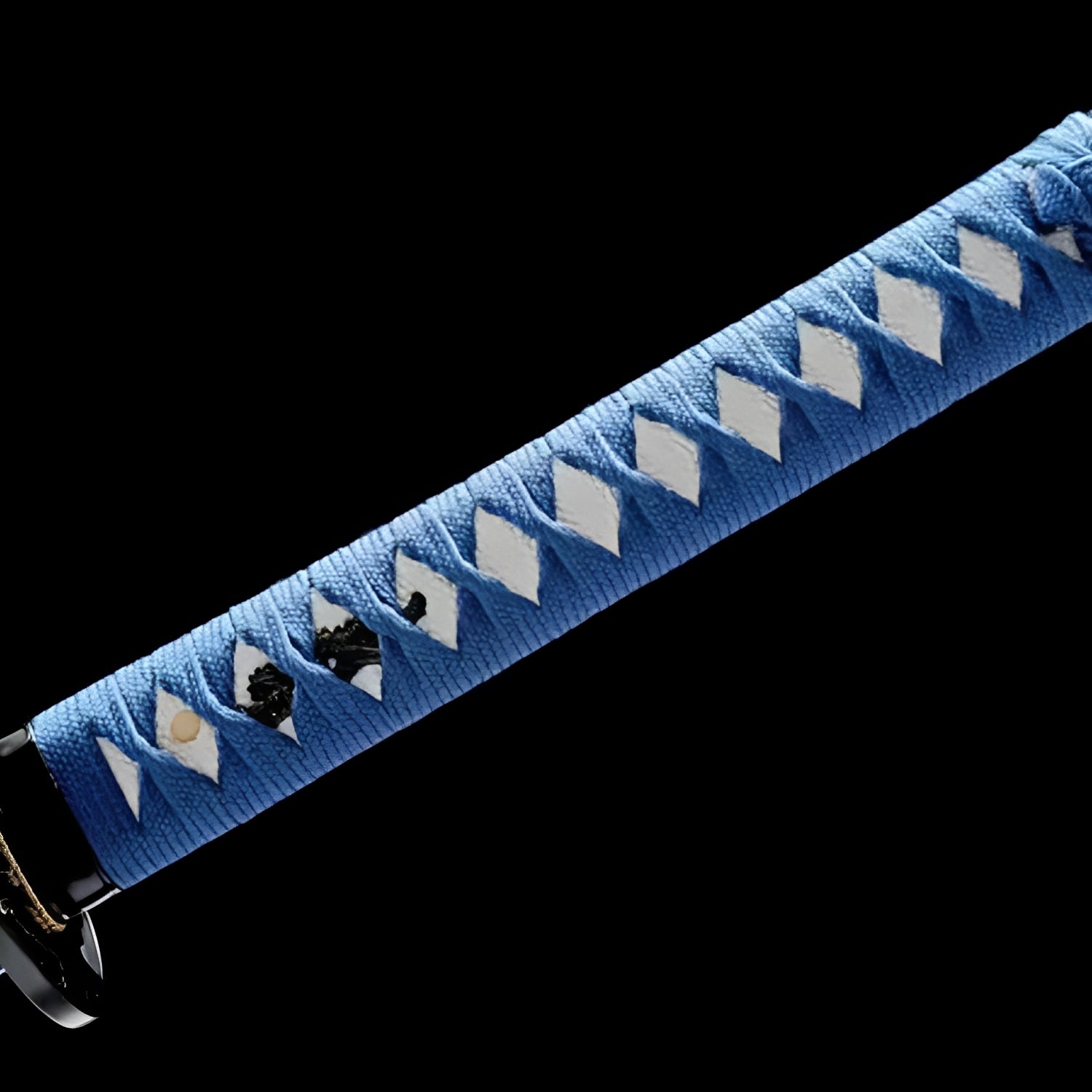
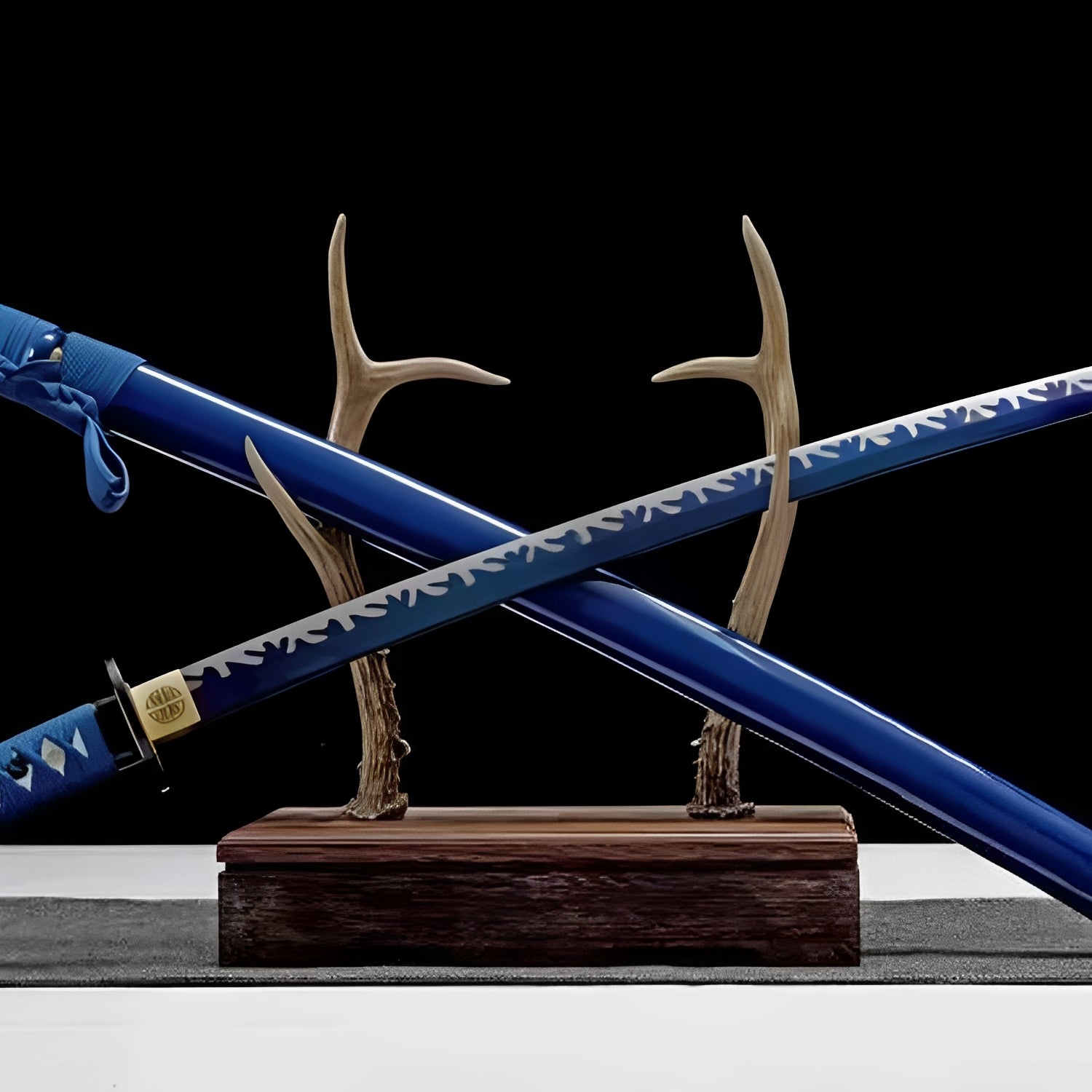
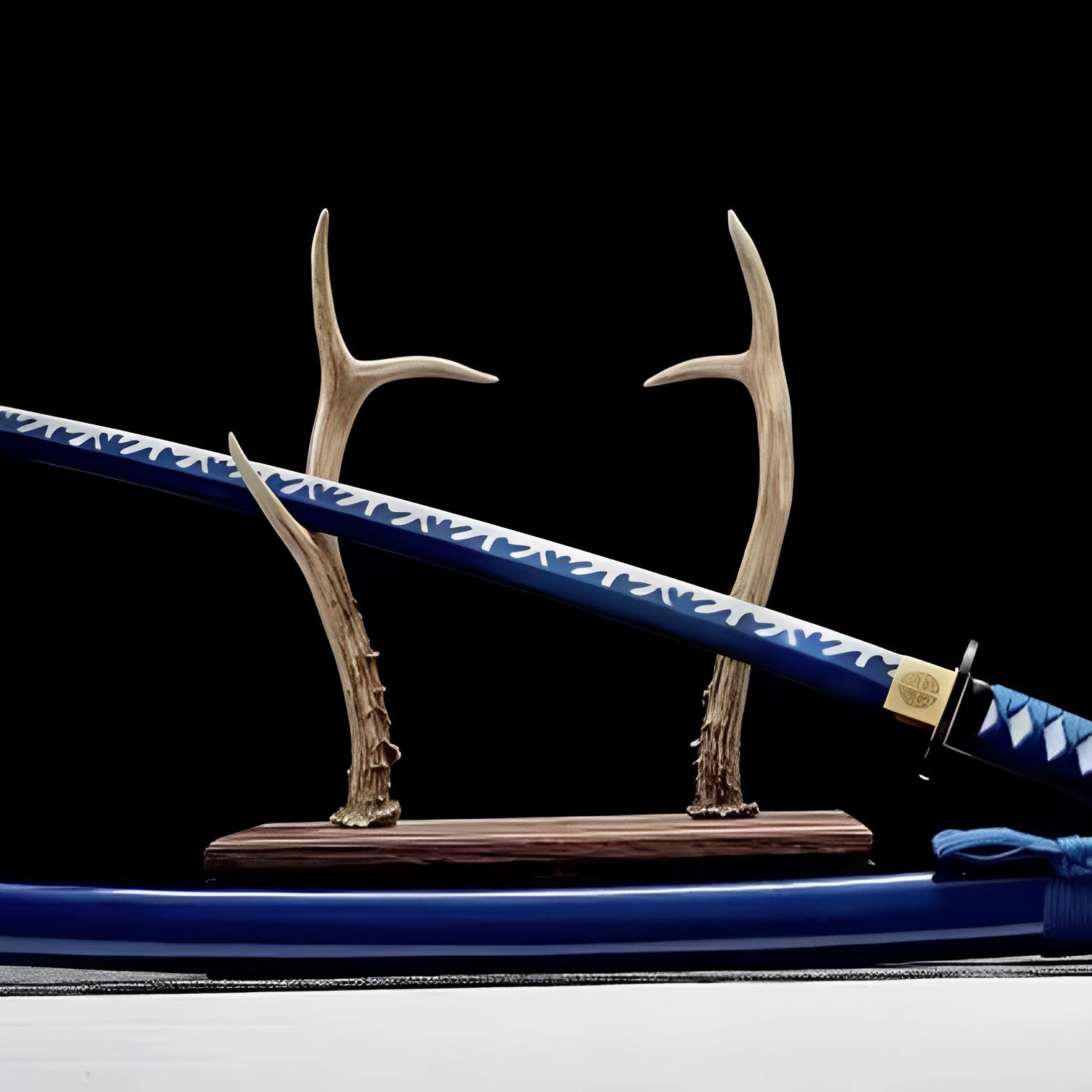
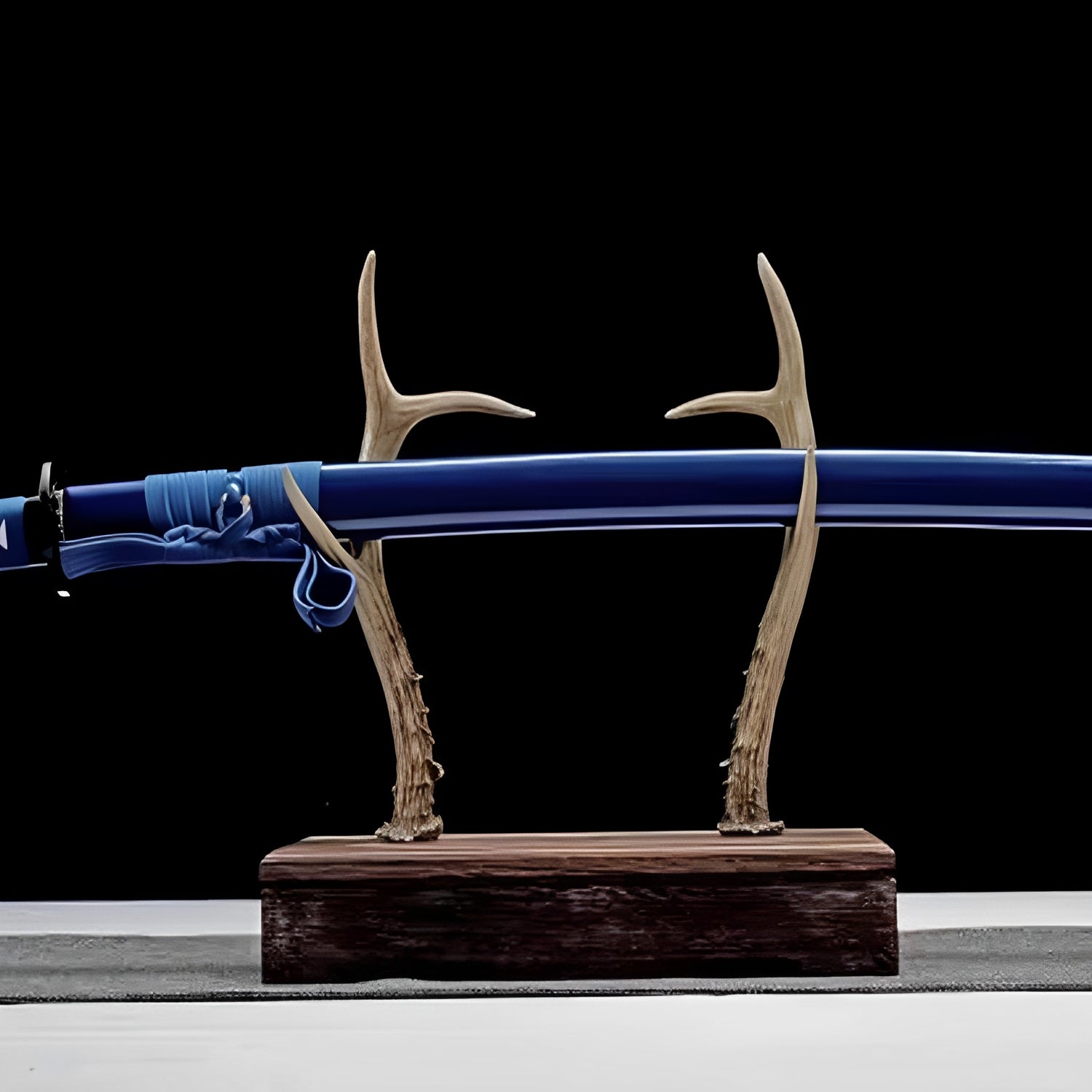
Hekinan Katana - 刈南刀
Included with your order



Note: Engraving placement and orientation may vary by blade model (hamon, geometry, and flat area).
Free Shipping over $250
No Bots, No AI
Refund Guaranteed
Free Shipping over $250
No Bots, No AI
Our team is here to help with any questions or concerns.
We’re always happy to assist you — don’t hesitate to reach out.

Hekinan Katana - 刈南刀
Specifications
- Handmade
- SHARP
- Blade: 1060 Carbon Steel
- SAGEO & ITO in Cotton
- Synthetic Rayskin
- Full Tang
- Iron Tsuba
- Total size: 105cm / 41 (in)
- Blade size: 72cm / 28 (in)
- Blade width: 3,2cm / 1.2 (in)
- Blade thickness: 0,7cm / 0.27 (in)
- Handle size: 30cm / 11.8 (in)
Hekinan Katana - Great Wave Ukiyo-e Maritime Legacy
Capture eternal motion with Hekinan Katana, blade where Hokusai's art becomes steel. This artistic wave pattern sword refuses static existence - azure depths flowing into sapphire peaks across saya like immortal waves frozen mid-crash, each curve honoring centuries of Japanese wave artistry from textile patterns to woodblock prints, the entire piece celebrating ocean's paradox of being eternally same yet never identical. Not weapon depicting water but steel embodying wave philosophy: persistent, cyclical, patient force that shaped islands, determined history, conquered continents not through single catastrophic strike but through ten thousand patient returns.
Ukiyo-e Wave Heritage
The wave patterns adorning this blade directly invoke ukiyo-e (浮世絵 - "pictures of the floating world") tradition, specifically Hokusai's "The Great Wave off Kanagawa" - arguably Japan's most internationally recognized artwork, the image defining Japanese aesthetic to Western audiences for 150+ years. Those flowing curves, the white foam crests, the sense of motion captured in stillness - this ukiyo-e tribute blade translates Hokusai's genius from woodblock print to three-dimensional sword mounting.
Hokusai specifically spent decades perfecting wave depiction, understanding that waves don't just move - they build, crest, crash, retreat, return, each cycle unique yet following eternal patterns. His Great Wave achieved immortality precisely because capturing that paradox: frozen moment suggesting infinite motion, single image containing every wave that ever broke or ever will. The saya's wave patterns honor that achievement, proving Hokusai's influence transcends original medium.
Traditional Japanese arts frequently cross-pollinated - textile patterns influenced ceramic decoration, architectural elements inspired painting compositions, sword fittings adopted motifs from poetry and theater. This cross-medium masterpiece continues that tradition, bringing woodblock printing's visual language into metalwork and lacquer, demonstrating that great ideas transcend their original contexts when executed skillfully.
The specific wave pattern (seigaiha 青海波 - "blue ocean waves") appears throughout Japanese cultural history - on kimono indicating nobility, decorating temples suggesting Buddhist eternal cycle, adorning armor connecting warriors to ocean's relentless power. That multi-contextual usage proves pattern's deep cultural resonance beyond mere prettiness.
Art collectors specifically appreciate pieces bridging fine art and functional craft, demonstrating that aesthetic excellence knows no hierarchy between "high" painting and "low" metalwork, that genius manifests equally in museum galleries and warrior equipment when creators possess vision and skill.
Maritime Warrior Culture
While most samurai discussions emphasize land-based feudal politics, Japan's island geography meant maritime power determined much history. Coastal clans defended against invasion, trading families accumulated wealth through sea commerce, warrior-sailors protected shipping from pirates, entire battles occurred on water requiring different strategies than land warfare. This maritime blade honors those often-overlooked seafaring warriors whose expertise shaped Japan as much as famous land-based samurai.
The blue specifically suggests ocean depths and coastal waters - not rivers or lakes but the vast Pacific surrounding Japan, the waters that isolated islands from mainland Asia yet connected them to distant Pacific cultures, the maritime highways carrying Buddhism from Korea, katana-making techniques from continent, the ocean roads enabling both peaceful trade and military threat.
Historical Japanese naval warriors (suigun 水軍) developed specialized techniques - boarding actions requiring different sword skills than open-field combat, fighting on rocking ship decks demanding superior balance, understanding tides and currents providing tactical advantages beyond mere blade skill. The naval warrior sword acknowledges those seafaring combat traditions rarely featured in samurai romanticization focusing on land battles.
Modern understanding of Japanese history increasingly recognizes maritime commerce's importance - the ocean wasn't barrier but highway, ships weren't luxuries but necessities, seafaring expertise wasn't specialty skill but survival requirement for island nation. The wave-adorned blade participates in that revised historical understanding, celebrating maritime culture rather than treating it as footnote to land-based samurai narratives.
Endless Cycle Philosophy
Waves embody eternal return - each wave crashes then retreats, yet waves never stop, the specific water molecules constantly changing while wave pattern persists. That paradox of change within continuity, of eternal return without exact repetition, created philosophical fascination across cultures recognizing waves as nature's perfect metaphor for cyclical existence.
Buddhist philosophy particularly appreciated wave imagery - individual waves (like individual lives) rise, peak, crash, disappear, yet ocean (like universal consciousness) persists eternally, the apparent separation between waves being illusion since all water connects. The Buddhist cycle blade patterns therefore aren't mere decoration but visual dharma teaching about impermanence and interdependence.
The specific artistic choice depicting waves mid-motion rather than at rest communicates important message: life exists in transition, not arrival. Waves don't stop moving; neither do lives, circumstances, challenges, opportunities. The eternal motion sword becomes reminder that stasis is illusion, that embracing change rather than resisting it enables flowing through obstacles like water shaping stone through patient persistence.
Traditional Japanese aesthetics celebrating transience (mono no aware) found perfect natural metaphor in waves - each wave unique, each beautiful, each temporary, each contributing to eternal pattern transcending individual instances. The blade's wave decoration participates in that aesthetic tradition connecting beauty, impermanence, and meaning.
Azure Gradient Mastery
The blue color progression from lighter near kojiri to deeper near handle creates dimensional effect suggesting ocean's depth layers - shallow coastal waters' lighter turquoise gradually darkening toward deep ocean's nearly black blue, the gradient communicating that simple "blue ocean" oversimplifies reality where water color indicates depth, light penetration, ecological zones ranging from sunlit surface to abyssal darkness.
This depth visualization blade demonstrates sophisticated color theory understanding - smooth gradients appear easy but require careful planning ensuring transitions read naturally rather than banded, that color progression suggests natural phenomenon rather than artificial effect. Quality finishing shows in gradient's smoothness, cheaper alternatives display obvious color boundaries destroying illusion.
Traditional Japanese indigo dyeing specifically developed techniques achieving subtle gradations through multiple dippings, craftsmen understanding that depth comes from layering rather than single application. Whether this blade achieved gradient through modern painting or traditional dip methods, the aesthetic references that centuries-old understanding that simple appearance requires complex execution.
The lighter blue near tip also creates visual movement - eyes follow light toward dark, the gradient directing attention along blade length, creating psychological suggestion of motion even when stationary. That subliminal effect separates thoughtful design from random color choices, demonstrating every aesthetic decision can serve compositional purpose beyond surface prettiness.
Coastal Collection Poetry
This maritime aesthetic piece serves collectors appreciating Japanese culture beyond samurai combat focus, recognizing that island nation's identity includes seafaring traditions, coastal communities, the ocean shaping everything from diet to architecture to spiritual beliefs. Owning wave-decorated blade means participating in broader cultural appreciation beyond warrior stereotypes.
Interior design perspectives particularly welcome coastal aesthetics - the blue palette works beautifully in beach houses, rooms with ocean views, spaces emphasizing natural elements and organic patterns. Unlike character-specific swords limiting display contexts, this universal wave theme integrates across varied environments.
Photography benefits from pattern complexity - the waves provide visual interest at every scale, close-ups revealing individual curve details, full-length shots showing overall flow, different lighting angles creating varied highlight/shadow interactions. That photographic versatility ensures excellent documentation images for collection records or social media sharing.
Investment value favors pieces with broad cultural resonance beyond temporary franchise popularity. Hokusai's Great Wave remains iconic 170+ years after creation; wave symbolism appears in every generation's art; ocean themes transcend cultural boundaries appealing internationally. The timeless pattern blade therefore represents safer long-term investment than trend-dependent character replicas.
The contemplative quality specifically appeals to collectors viewing swords as meditation objects rather than pure decoration - the waves' endless motion pattern creates focal point for contemplation, their cyclical nature prompting reflection on impermanence and persistence, their beauty reminding that nature's patterns reward sustained observation revealing complexity invisible at glance.
Care Instructions: Maintain this ukiyo-e masterpiece recognizing artwork demands artist-level preservation. The gradient blue finish requires protection from UV light causing fading; display away from direct sunlight or use UV-filtering glass if window-mounting. Clean wave patterns gently following curve directions; circular scrubbing damages details. Polish golden fittings carefully - that brass accent provides essential warm note against cool blue palette. Handle understanding this represents specific artistic tradition, that wave patterns aren't random decoration but deliberate reference to centuries of Japanese aesthetic achievement. Consider this blade invitation deepening appreciation for Japanese art history beyond anime/gaming contexts, exploring how traditional patterns informed modern designs, recognizing that greatest art transcends medium boundaries when vision and skill align. The waves will continue their eternal dance long after current collecting trends pass, the patterns remaining beautiful when today's popular franchises become tomorrow's nostalgic memories.
The wave rises. The wave crashes. The wave returns. Eternal motion, frozen moment, Hokusai's legacy flows.
Legal Disclaimer
By purchasing from Katana Corp, you acknowledge and agree that:
- You are at least 18 years of age (or the age of majority in your jurisdiction).
- You are solely responsible for verifying and complying with all local laws and import regulations before placing an order.
- Some countries prohibit the importation of swords entirely. Katana Corp is not responsible for orders delayed, seized, or refused by customs authorities.
- All katanas and related products are sold strictly as decorative and display items. They are not intended or certified for combat use.
- Depending on the jurisdiction, swords may legally be considered bladed weapons, subject to specific restrictions or prohibitions.
- Katana Corp disclaims all liability for any injury, damage, or legal consequences resulting from misuse, abuse, or unlawful use of its products.
For full details, please refer to our Terms of Service.
Care & Maintenance
To maintain your katana's appearance and performance over time, we recommend:
- Regularly wiping the blade with a soft cloth to remove fingerprints and moisture.
- Applying a light coat of choji oil to prevent rust (for carbon steel blades).
- Storing the sword in a dry place, preferably inside its saya.
- Avoiding direct contact with hard surfaces to preserve sharpness and finish.
For more care tips, check our full maintenance guide in the FAQ section.
Behind the Blade
Every katana we offer carries the essence of centuries-old craftsmanship.
More than just a weapon, the katana symbolizes discipline, honor, and mastery.
Our artisans draw inspiration from traditional forging methods to ensure each blade reflects the spirit of the samurai — strength, precision, and soul.
Owning one is not just about aesthetics — it’s about carrying a piece of that legacy.
User Experience
This katana is designed to offer a perfect balance between blade and handle.
Its ergonomic tsuka (handle) allows a secure two-handed grip, while the weight distribution ensures smooth, fluid movement.
Whether for training, display or cutting practice, handling feels natural and precise.

The Art of Traditional Forging
Each katana we craft is born from centuries of samurai tradition.
Our master smiths shape every blade by hand, folding the steel to achieve unmatched strength, flexibility, and beauty.
This time-honored process is not just about creating a weapon? it’s about preserving a legacy of discipline, honor, and artistry.
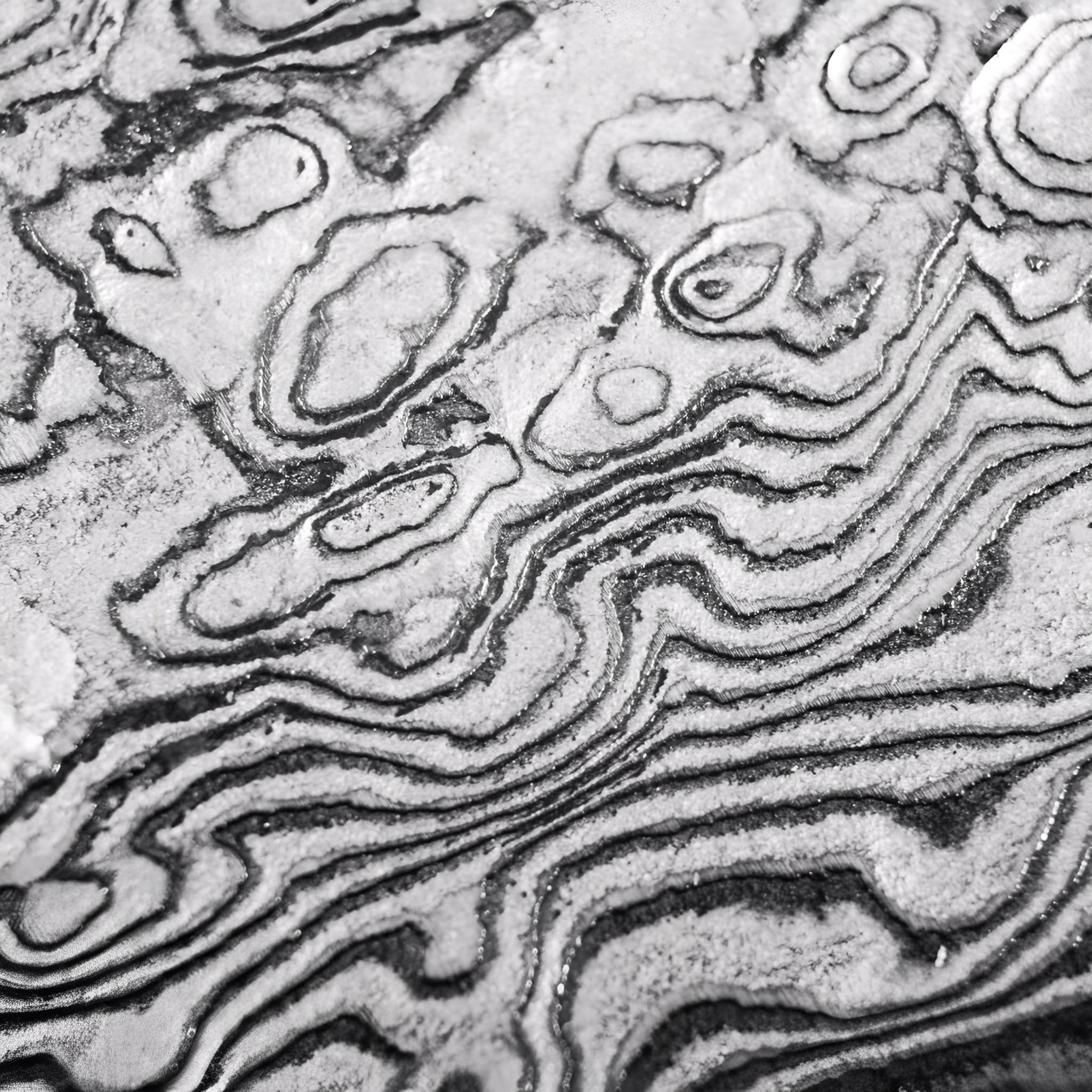
Materials Chosen Without Compromise
We select only the highest-grade steels and authentic fittings to ensure every katana is both a masterpiece and a reliable companion.
From the flawless hamon line to the perfectly balanced tang, each detail is carefully inspected to meet the highest standards of performance and aesthetics.
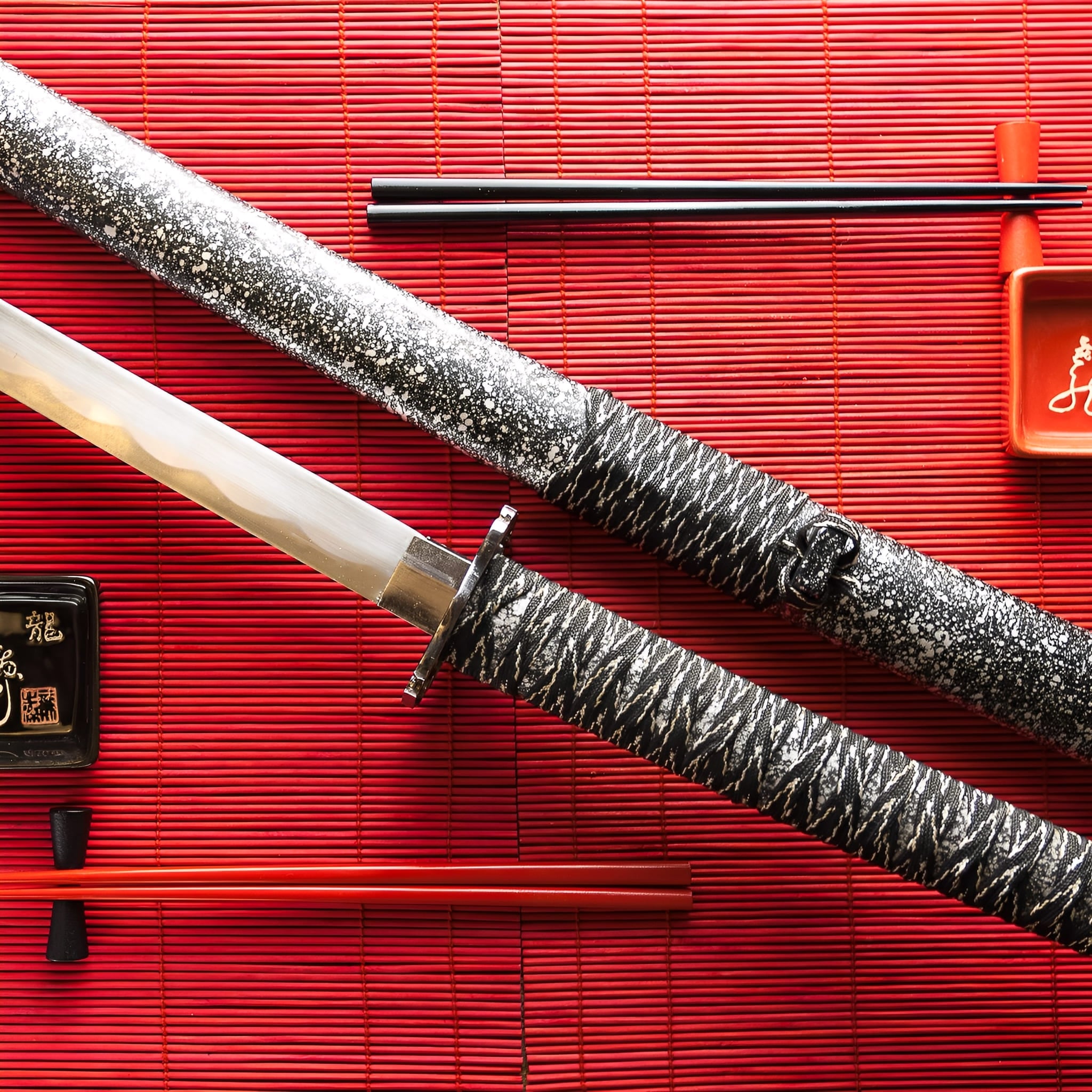
More Than a Sword, A Lifelong Legacy
Owning a handmade katana is an experience that goes beyond the blade itself. It’s holding history, tradition, and craftsmanship in your hands.
Whether displayed as a work of art or wielded with precision, your katana will stand as a symbol of timeless skill and dedication for generations to come.
-
Key Destinations
United States: 5–7 days
Canada: 5–7 days
Australia: 6–9 days
Denmark: 4–6 days
Netherlands: 3–5 days
Sweden: 4–6 days
Switzerland: 3–5 days
Finland: 5–7 days
Singapore: 6–8 days -
Central European Partners
France: 2–3 days
Germany: 3–5 days
Spain: 4–6 days
Italy: 4–6 days
Belgium: 3–5 days
Austria: 4–6 days
Ireland: 4–6 days
Poland: 4–6 days
Portugal: 4–6 days -
Extended EU Network
Czechia: 4–6 days
Hungary: 4–6 days
Slovakia: 4–6 days
Slovenia: 5–7 days
Romania: 5–7 days
Bulgaria: 5–7 days
Croatia: 5–7 days
Serbia: 5–7 days
Estonia: 5–7 days
Latvia: 5–7 days
Lithuania: 5–7 days
Luxembourg: 3–5 days
Greece: 5–8 days -
FAQ’s
Visit our FAQs page to find answers to common questions.